#metopes
Explore tagged Tumblr posts
Text
The Twelve Labours of Heracles 💪



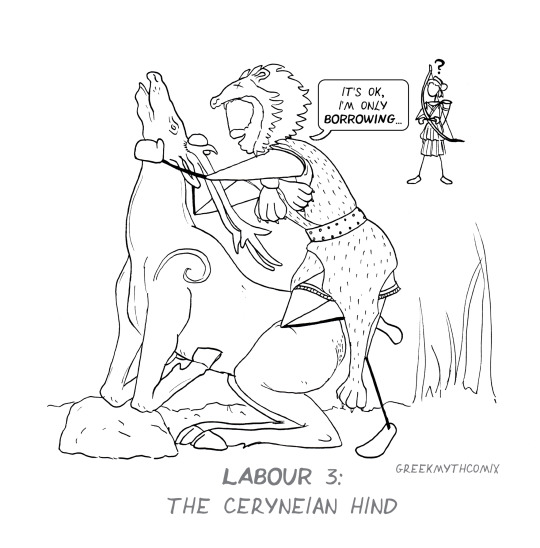

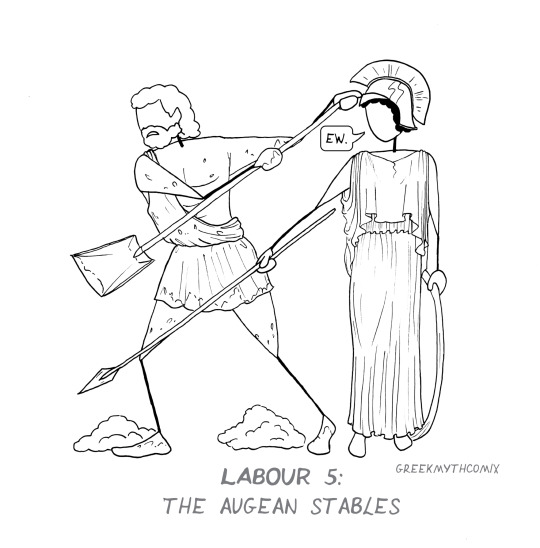
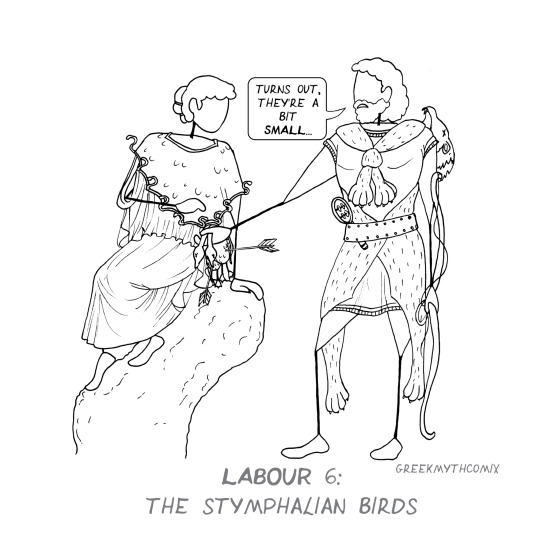

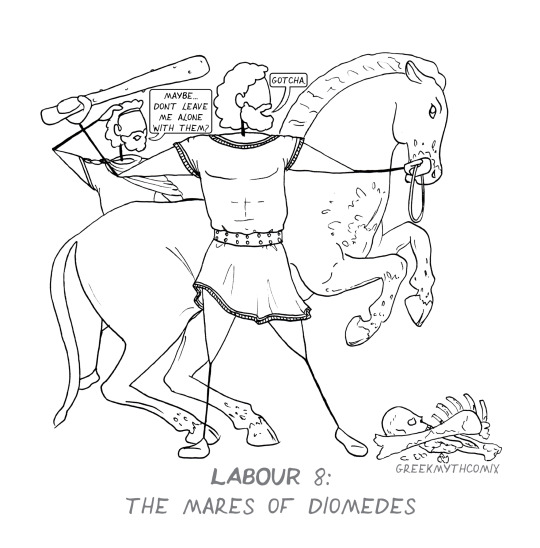
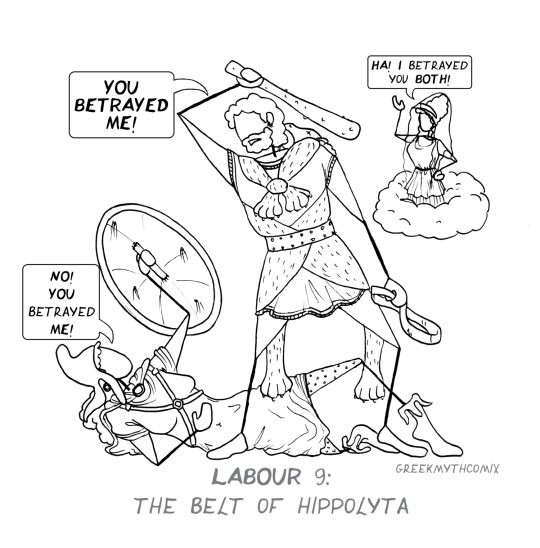
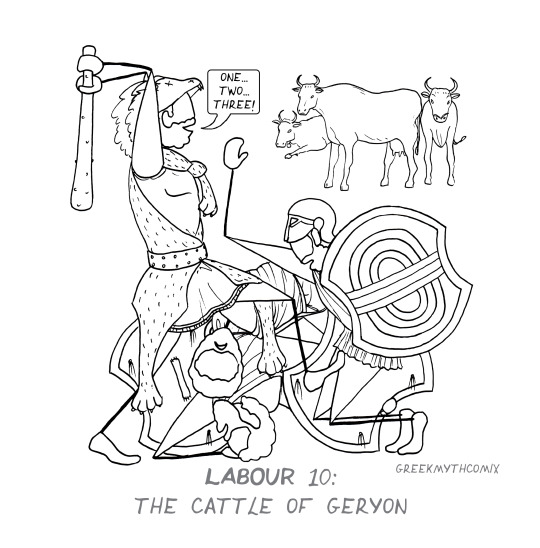
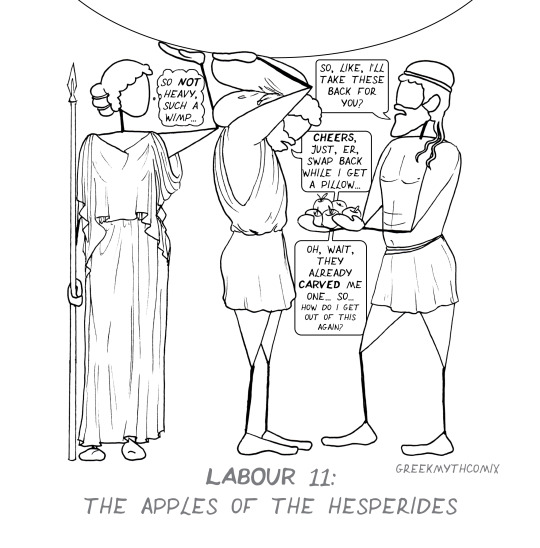
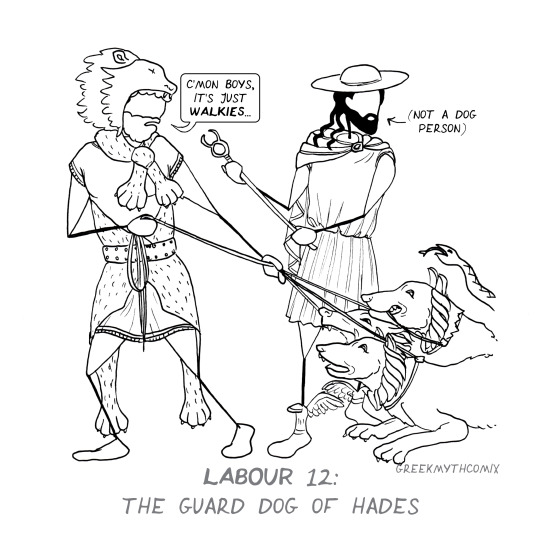
I made these for class, to revise the Labours along with the metopes of Heracles from the Temple of Zeus at Olympia! https://www.carc.ox.ac.uk/carc/resources/Sculpture/context/OlympiaMetopes
All my GCSE classes for Heracles and Hercules are here (from UK Lockdown 1): https://www.youtube.com/playlist?list=PLN36Hwtm4-c0bqo8hPCLeIMBmkUC5Jb4l
#greek mythology#greek myth#tagamemnon#illustration#greek myth comix#heracles#hercules#metopes#olympia#gcse classics#classical civilisation#homeschool#classics#comix#labours of hercules#labours of heracles#twelve labours#original ten labours#map#ancient greek mythology#the universal hero#school#classics teacher#teacher#teaching resources
48 notes
·
View notes
Text
metope xxvi

location: parthenon at athens
date: 447-442 bce
subject
centauromachy - the battle of the lapiths and the centaurs
recent greco-persian war - the theme of civilisation vs barbarism evident in the centauromachy could be applied to the context - the sculptor is trying to portray that greeks = civilised and persians = animalistic and barbaric
composition
both the lapiths and the centuar have very strong vertical poses - this emphasises the strength of both figures
the verticals of the bodies are contrasted by the diagonal lines of the lapith's raised arm and leg
the left leg of the centaur is almost parallel to the bottom of the metope - this breaks up the vertical composition of the metope and fills more space
the shallowly carved drapery behind the lapith adds more depth to the scene and also fills more space - adds more visual interest
the lapith has a stone in his hand - it is clear to the viewer that his intention is to strike the centaur
the legs of the lapith are different lengths - the bent leg is shorter than the straight leg
the equine half of the centaur is much too small - potentially not the best subject choice for such a small space
bulging muscles in areas such as the pectorals and abdominal muscles
the face of the centaur is very flat and he has no neck
scholars
woodford: "both figures are awkward ... and clearly the work of a less accomplished sculptor"
cook: "the composition is dull, the poses improbable"
#a level classical civilisation#a level classics#classical civilisation#classics#ocr classical civilisation#greek art#greek sculpture#metopes#metope
1 note
·
View note
Text
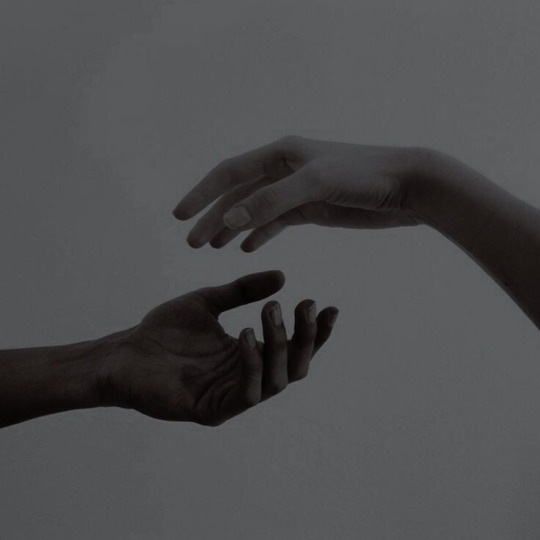
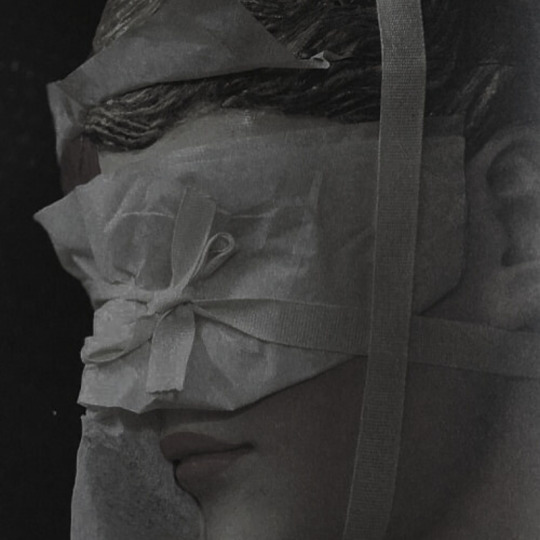

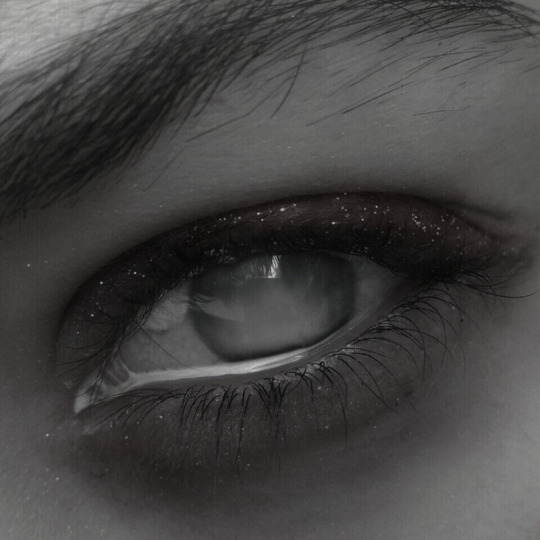
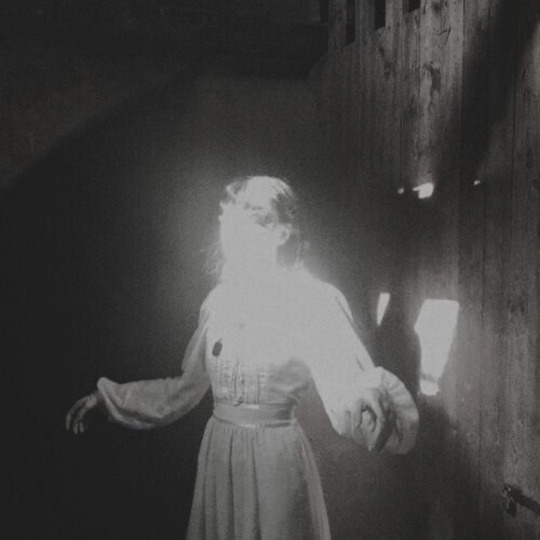
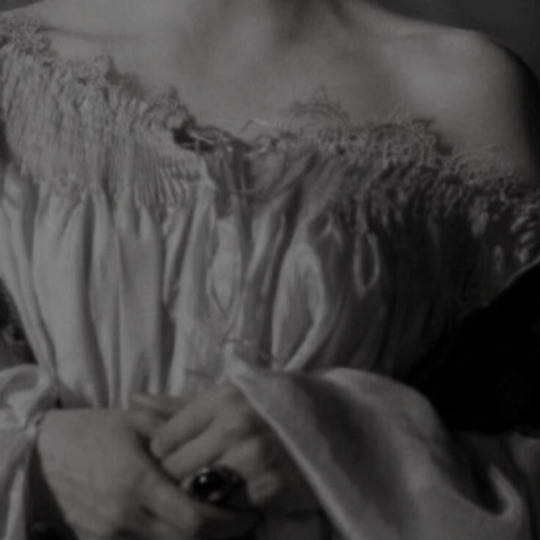
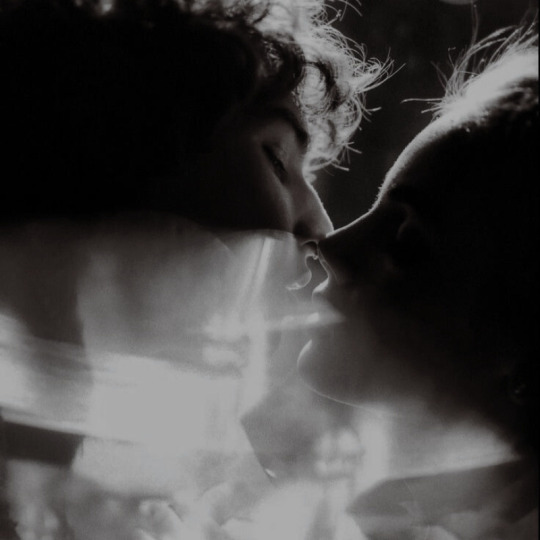
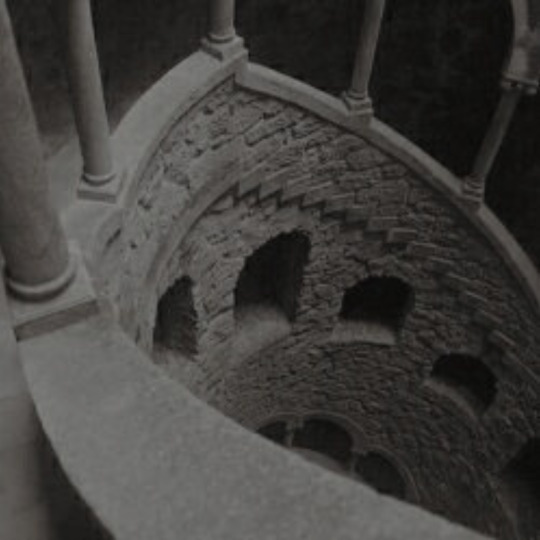
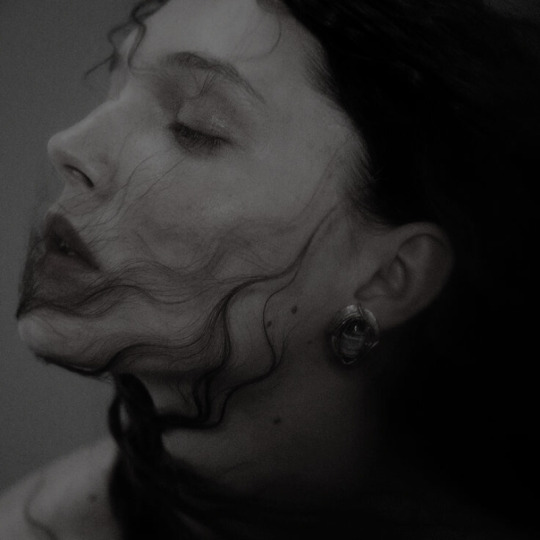
greek mythology: metope
metope, was an epirotian princess, the daughter of king echetus. she had an intrigue with a lover and as a punishment her father mutilated the lover and blinded metope by piercing her eyes with bronze needles. he then incarcerated her in a tower and gave her grains of bronze, promising that she would regain her sight when she had ground grains into flour.
266 notes
·
View notes
Text
Gonna go out somewhere remote to listen to satellites later y'all want anything
#raven rambles#my stuff#hoping to get EWS-G2 my beloved#also metop c#there's also noaa 19 and noaa 15 coming by in super nice passes so we'll see about those#exciting times!
23 notes
·
View notes
Text
Words I've learnt reading Invisible Cities:
Calcareous - high in calcium, usually referring to rocks
Noria - a type of waterwheel that lifts water into an aqueduct
Planisphere - navigation instrument that displays a star chart which can be kept current based on the date
Odalisque - a seraglio attendant
Ephebe - adolescent male, usually in military training
Mullion - a vertical stone divider in a window
Mandrel - refers to various tools used in machining; Calvino is referring to a type used with a lathe to hold materials in place
Cambered - slightly arched
Lunette - the semi-circle of panelling or glass you sometimes have at the top of a door
Corbel - architectural feature; a bracket built into (not fixed to) a wall to support something on top of it, often decorated
Majolica - a type of pottery with a tin-based glaze
"I learnt a new word" is kind of the most juvenile thing you can get from a book, especially since any book where I learn a lot of new words is probably going to be one with real intellectual heft behind it. Obviously I didn't read Invisible Cities to learn new words.
But that doesn't mean I'm not pleased to learn these things. There is a real satisfaction to laying them out like this, there is a kick I get out of having to look them up, and there is always a quality I enjoy in books where obscure words are regularly used. It's a texture that I appreciate.
#i have left out one type of bird and also the word metope.#i will forget the bird#and i'm not sure i could define metope in a way that distinguishes it from any other recessed part of a frieze.#invisible cites
6 notes
·
View notes
Text

Pheidias' workshop
Amazon rushes into battle. Parthenon. West Metope 1 (1/14) 445-440 BC. Marble from Penteli H: 1.35 x 1.137. Exhibited in the Acropolis Museum (with nrs. 1, 2, 13, 14). They were removed from the monument in 2012 for their protection from atmospheric polution and errosion [is this graffiti?]
Many believe that she is queen Antiope, who fell in battle on the side of her husband, the Athenian hero Theseus.
The regular alternating subjects of the 14 West Metopes [possibly] depict the legend of the Amazonomachy that occured on the Areopagus and symbolised Athens' resilience to ferocious threats [2 women warriors remain in good shape, fighting naked male youth]
The grave and irreversible damages were provoked mainly by intentional hammering [there are many suspects during the millennia...]
https://www.theacropolismuseum.gr/en/parthenon-west-metope-1
https://en.wikipedia.org/wiki/Metopes_of_the_Parthenon
4 notes
·
View notes
Text
Maurizio Nobile Fine Art annuncia la sua prima partecipazione a MIART dal 4 al 6 aprile 2025 dal 4 al 6 aprile 2025 Sezione Established
In occasione della prossima edizione di MIART, Maurizio Nobile Fine Art in collaborazione con l’Archivio Luciano Minguzzi di Venezia dedica focus espositivo sul grande scultore bolognese che ha attraversato il Novecento con indomabile fierezza riscuotendo fin dall’inizio stupore e consensi. Un artista completo, Minguzzi, che con il disegno, il colore, il modellato è stato un vigile e colto…
#accademia di Brera#acrobati in scultura#Alessandria today#Archivio Luciano Minguzzi#Arte contemporanea#arte del Novecento#arte e guerra#Arte figurativa#Arte Italiana#Arte moderna#Biennale di Venezia#Bologna#Bonanno Pisano#bronzo#cera#COLLEZIONISMO#Duomo di Pisa#Ercole Drei#esposizione MIART#fiera arte contemporanea#galleria d’arte#Giorgio Morandi#Google News#italianewsmedia.com#Lava#Legno#Luciano Minguzzi#Maurizio Nobile Fine Art#metope Duomo Modena#MIART 2025
0 notes
Text
Airbus consegna il primo strumento Sentinel-5 per l'integrazione satellitare Airbus Defence and Space ha consegnato all’Agenzia Spaziale Europea (ESA) il primo strumento Sentinel-5 che sarà integrato sul satellite MetOp A di seconda generazione. Lo strumento UVNS (Ultraviolet Visible Near-infrared Short-wave infrared Spectrometer) contribuirà a migliorare il monitoraggio della qualità dell’aria, dei cambiamenti nello strato di ozono e delle emissioni da incendi boschivi. Sentinel-5 è una delle cosiddette “sentinelle atmosferiche”, costruite per rispondere a domande relative alla composizione dell’atmosfera terrestre: la sua missione è quella di monitorare globalmente la distribuzione dei gas in traccia e degli aerosol atmosferici (particolato) su base operativa a lungo termine, a sostegno del programma di
#Aerospazio#Airbus_Defence_and_Space#aerospazio#European_Space_Agency#MetOp#satellite#Sentinel_5#Ultraviolet_Visible_Near_infrared_Short_wave_infrared_Spectrometer
0 notes
Text
Protection of Unregistered Trademarks | IP Attorney in Delhi NCR | IP Lawyer in Delhi NCR |

Even if an unregistered mark lacks the legislative protection that registered marks have, the law recognises unregistered marks that have gained ample reputation without registration. In the event that a registered mark is misappropriated, the right holder may file a trademark infringement lawsuit against the infringer. However, the right holder is entitled to seek protection under the rule of passing off for the infringement of unregistered marks. The idea that “a man should not sell his goods under the false illusion that they are the goods of another man” underpins a claim for passing off. The passing off law prohibits one individual from misrepresenting the goods or services of another. Passing off is a type of unfair trade competition in which one person attempts to benefit from another’s popularity in a specific trade or industry. The central issue in this tort is if the defendant’s actions deceive or mislead the general public, causing uncertainty between the two industries’ operations. Read more
#BEST LAWYER FOR TRADEMARK REGISTRATION IN GURUGRAM#BEST TRADEMARK ATTORNEY NEAR METOP ATTORNEY IN DELHI#FOR TRADEMARK AND LOGO REGISTRATIONTOP ATTORNEY IN DELHI#TO REGISTER TRADEMARK ONLINETOP ATTORNEY IN DELHI#TO TRADEMARK MY COMPANY NAMETOP ATTORNEY IN DELHI#TO TRADEMARK MY LOGOTOP LAWYER FOR TRADEMARK REGISTRATION IN DELHI#TOP LAWYER FOR TRADEMARK REGISTRATION IN GURUGRAM
0 notes
Text
Some Architecture Vocabulary

Arcade: a succession of arches supported on columns. An arcade can be free-standing covered passage or attached to a wall, as seen on the right.
Arch: the curved support of a building or doorway. The tops of the arches can be curved, semicircular, pointed, etc.
Architrave: the lowest part of the entablature that sits directly on the capitals (tops) of the columns.
Capital: the top portion of a column. In classical architecture, the architectural order is usually identified by design of the capital (Doric, Ionic, or Corinthian).
Classical: of or pertaining to Classicism.
Classicism: a preference or regard for the principles of Greek and Roman art and architecture. Common classicizing architecture is a sense of balance, proportion, and “ideal” beauty.
Column: an upright post, usually square, round, or rectangular. It can be used as a support or attached to a wall for decoration. In classical architecture, columns are composed of a capital, shaft, and a base (except in the Doric order).
Cornice: the rectangular band above the frieze, below the pediment.
Dome: a half-sphere curvature constructed on a circular base, as seen on the right.
Entablature: the upper portion of an order, it includes the architrave, frieze and cornice.
Frieze: the wide rectangular section on the entablature, above the architrave and below the cornice. In the Doric order, the frieze is often decorated with triglyphs (altering tablets of vertical groves) and the plain, rectangular bands spaced between the triglyphs (called metopes).
Metopes: the rectangular slabs that adorned the outside of Doric temples, just above the exterior colonnade.
Order: an ancient style of architecture. The classical orders are Doric, Ionic, or Corinthian. An order consists of a column, with a distinctive capital, supporting the entablature and pediment.
Pediment: a classical element that forms a triangular shape above the entablature. The pediment is often decorated with statues and its sides can be curved or straight.
Pronaos (pro-NAY-us): the entrance hall of a temple.
Triglyphs: a decorative element of a frieze consisting of three vertical units.
Vault: an arched ceiling usually made of wood or stone, as seen on the right.
Source ⚜ More: Word Lists ⚜ Notes ⚜ Writing Resources PDFs
#writeblr#writing notes#terminology#writers on tumblr#architecture#writing prompt#poetry#literature#poets on tumblr#spilled ink#creative writing#writing reference#dark academia#light academia#lit#worldbuilding#studyblr#langblr#booklr#bookblr#word list#writing resources
715 notes
·
View notes
Text
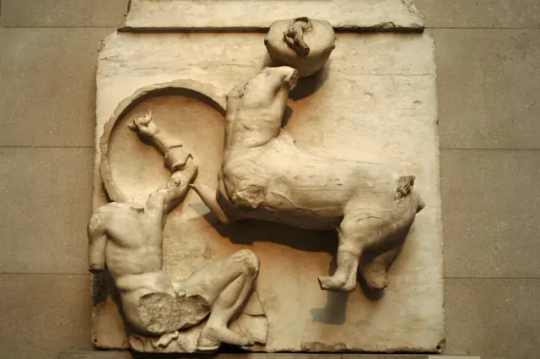
How This Parthenon Relief Was Torn Apart—Twice
South Metope IV is one of many sculptures from the ancient Greek temple whose fragments are scattered across the globe.
The Venetians struck the first blow. In 1687, amid the Great Turkish War, Venice’s forces rained a fusillade of cannonballs on the Ottoman-held Parthenon in Athens, Greece. The Turks had been using the Classical temple as a storage facility for their ammunition, believing it could withstand bombardment just as it had weathered history. Not so. The explosion demolished most of the Parthenon’s walls and columns, wrecking its architraves, triglyphs, and metopes.
After the blast, what remained of the Parthenon’s metopes, or relief-carved panels, were but shattered fragments. Some were picked up and reused as building material. Other parts were snatched by Western visitors eager for a piece of the temple. Thomas Bruce, Lord of Elgin, famously swung by to seize a trove of Parthenon marbles; Frenchman Louis-François-Sébastien Fauvel and Danish captain Moritz Hartmann, who was part of the Venetian fleet, also carried away their share of loot.
Amid this free-for-all, the metopes were scattered not just all over the Acropolis, but across the globe. Among them was South Metope IV, depicting a dramatic confrontation between a Centaur and a Lapith, that has been split apart for centuries.

19th-century engraving reconstructing the Parthenon in Athens at the time of Pericles.
When the Parthenon was completed in 432 B.C.E., it epitomized the height of Greek architecture—its colonnade, masonry, and magnificent frieze overseen by Phidias harmonizing in a grand tribute to the goddess Athena.
Spanning the temple’s entablature, the frieze held 92 metopes—28 facing the east and west, and 64 split evenly between the north and south sides. Each metope group, carved out of Pentellic marble, chronicles scenes from legendary clashes, often featuring two figures. The east, for example, retold the mythical clash between the Olympians and the Giants, while the north revisited the sack of Troy. The south side, meanwhile, detailed the fabled fight between the Lapiths, a Thessalian tribe, and the Centaurs who crashed the wedding feast of their king.
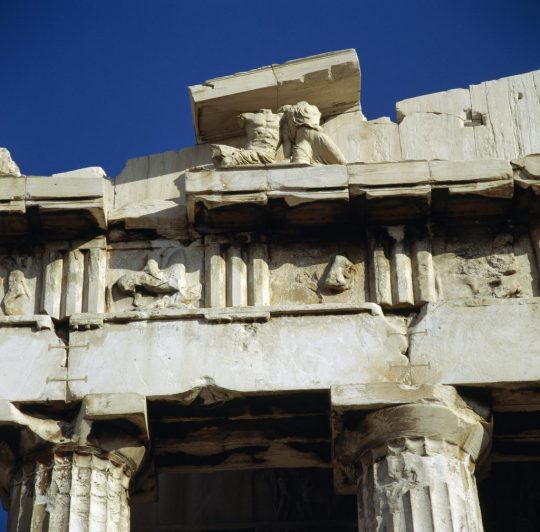
Metopes and reliefs on the west pediment of the Parthenon in Athens, Greece.
After facing calamities ranging from fire to vandalism by Christians, the metopes were finally toppled by the Venetians’ shells on September 26, 1687. In the early 19th century, South Metope IV joined some 14 others that wound up in the British Museum—but in a greatly reduced state. Where the panel once portrayed a Centaur raising a jug, ready to crash it onto a cowering Lapith vainly clutching a shield, the surviving artifact is missing both figures’ heads and part of their limbs.
The key to completing the metope, it turns out, rests in the collection of another institution: the National Museum of Denmark.
Back in 1687, army captain Hartmann snapped up the heads of a bearded man and a youth from a street vendor in Athens; he carried them home to Copenhagen where they ended up in the Royal Kunstkammer. Studies in the 1820s concluded that the heads were associated with South Metope IV. In the following decade, Denmark’s royal collection received yet another fragment linked to South Metope IV, this one shaped like a Centaur hoof.

Centaur head of South Metope IV from the Parthenon in Athens.
These heads add emotional heft to the metope. The bearded Centaur is carved with a steely gaze and his arm bent backward in preparation to strike; the young Lapith, in response, greets the incoming blow with a half-opened mouth and wide eyes. (The former relic is also covered in a mysterious brown stain that has long confounded scientists.)
And there are yet more parts to the metope. While the Danish Museum holds one of the Centaur’s hoofs, the figure’s left hind leg is all the way back in Athens, in the Acropolis Museum. South Metope IV, therefore, is “literally and metaphorically torn between London, Copenhagen, and Athens,” as George Vardas, secretary of the Australian Hellenic Council, wrote in Greek City Times—and it is not the only Parthenon sculpture to be so divided.
We have from the same figure, half of the body in Athens, half of the body in London,” said Dimitrios Pandermalis, the director of the Acropolis Museum, in 2009. “We have a body in London and a head in Athens. We have horses in London, and the tails of the horses are in Athens. It is a moral problem in art of divided monuments.”

Lapith head of South Metope IV from the Parthenon in Athens.
In 2015, the British Museum and the National Museum of Denmark collaborated on a digital reconstruction of South Metope IV, imagining how the work once appeared, complete with polychromy. But the day that the museums’ respective pieces might be physically reunited appears far off.
Both the Copenhagen and British institutions have spurned Greece’s continued appeals for the return of the Parthenon marbles. In 2023, the Danish museum’s director Rane Willerslev noted that its fragments “are of greater importance to the National Museum than if they were sent to Greece.” The U.K.’s drawn-out talks with Greece regarding the Parthenon relics, meanwhile, remain “ongoing,” according to the British Museum in 2024.

The Parthenon Gallery in the Acropolis Museum in Athens, Greece.
Perhaps the best place to see a form of the somewhat complete metope is in the Acropolis Museum, which houses a plaster cast of the South Metope IV. Installed in its Parthenon gallery, the replica affixes the figures’ heads to their bodies, leaving out their lost limbs but painting no less of an intense encounter. The museum’s aim is to eventually reunite the original elements of the Parthenon compositions. With South Metope IV, a left hind leg represents a first step.
By Min Chen.
#The Parthenon#How This Parthenon Relief Was Torn Apart—Twice#Athens Greece#marble#marble sculptures#ancient greek temple#ancient artifacts#archeology#history#history news#ancient history#ancient culture#ancient civilizations#ancient greece#greek history#greek art#ancient art#long post#long reads
85 notes
·
View notes
Text

The running Gorgon, archaic terracotta metope from the Artemision of Syracuse (6th century BC) today at the Paolo Orsi Regional Archaeological Museum
118 notes
·
View notes
Text
cretan bull

location: temple of zeus, olympia
date: 465-457 bce
subject: herakles fighting the cretan bull
composition
herakles and the bull are leaning in opposing directions - this creates a dynamic feel to the sculpture and also introduces chiastic composition
the two figures are turning their heads back towards each other - this brings the viewer's attention back to the centre of the metope - the musculature of both the bull and herakles
speaking of musculature, herakles is RIPPED - he has insane abdominal muscles, and they are reacting to the torsion of his body
his pectorals and abdominal muscles are over-exaggerated, though, and this creates a strange contrast with the smoothness of his hair
the left horn of the bull was created from a different piece of marble and added on later - this allows for more of a 3d effect as the horn protrudes into the space of the viewer
the twist in the neck of the bull increases the impression of depth in the metope
there is some very fine detail in the depiction of the cretan bull - the nostril is flared, and there are very thin wrinkles around the eye of the bull - this sensitive rendering of anatomy makes the metope much more realistic and "believable"
scholars
andronicus: "conflict of forces"
#a level classical civilisation#a level classics#classics#classical civilisation#ocr classical civilisation#greek art#metopes#herakles#cretan bull
1 note
·
View note
Photo

The extraordinary quality and quantity of the marble sculpture which adorned the 5th century BCE Parthenon in Athens made it the most richly decorated of all Greek temples. The sculpture, now mostly separated into the Parthenon Marbles (Elgin Marbles) and the Acropolis Museum Collection of Athens, once consisted of 92 metopes, a unique frieze running around all four sides of the building, and both pediments filled with 50 monumental figures. The sculpture presented scenes from mythology which were a metaphor for the Greek triumph over Darius and Xerxes in the recent Persian Wars. The whole edifice and fine artwork were designed to wow onlookers and glorify Athens and her patron goddess Athena. As the instigator of the whole project, Pericles rightly boasted "...we shall be the marvel of the present day and of ages yet to come".
52 notes
·
View notes
Text
I FIGURED SOMETHING OUT
when i first looked into the etymology for Helena i overlooked this bc i was not paying attention to twins yet and just thought the torch part was kewl.
have you heard of castor and pollux?
I hadn't! Turns out they are the twin brothers of Helen (of Troy, who also has a twin sister?!?)
(I want to scream a little bit)
from wikipedia (the underlines are from the wiki the color is mine) :
"Their mother was Leda, but they had different fathers; Castor was the mortal son of Tyndareus, the king of Sparta, while Pollux was the divine son of Zeus, who seduced Leda in the guise of a swan.[2] The pair are thus an example of heteropaternal superfecundation. Though accounts of their birth are varied, they are sometimes said to have been born from an egg, along with their twin sisters Helen of Troy and Clytemnestra.
In Latin, the twins are also known as the Gemini ("twins") or Castores, as well as the Tyndaridae or Tyndarids.[e] Pollux asked Zeus to let him share his own immortality with his twin to keep them together, and they were transformed into the constellation Gemini. The pair were regarded as the patrons of sailors, to whom they appeared as St. Elmo's fire. They were also associated with horsemanship, in keeping with their origin as the Indo-Europeanhorse twins.
When their sister Helen was abducted by Theseus, the half-brothers invaded his kingdom of Attica to rescue her. In revenge they abducted Theseus's mother Aethra and took her to Sparta while setting his rival, Menestheus, on the throne of Athens. Aethra was then forced to become Helen's slave. She was ultimately returned to her home by her grandsons Demophon and Acamas after the fall of Troy.
Returning to the dying Castor, Pollux was given the choice by Zeus of spending all his time on Mount Olympus or giving half his immortality to his mortal brother. He opted for the latter, enabling the twins to alternate between Olympus and Hades.[16][17] The brothers became the two brightest stars in the constellation Gemini ("the twins"): Castor (Alpha Geminorum) and Pollux (Beta Geminorum). As emblems of immortality and death, the Dioscuri, like Heracles, were said to have been initiated into the Eleusinian mysteries.[g] In some myths, Poseidon rewarded them with horses to ride and power to aid shipwrecked men.[19]
On votive reliefs they are depicted with a variety of symbols representing the concept of twinhood, such as the dokana (δόκανα – two upright pieces of wood connected by two cross-beams), a pair of amphorae, a pair of shields, or a pair of snakes. They are also often shown wearing felt caps, sometimes with stars above. They are depicted on metopes (an element of a Doric frieze) from Delphi showing them on the voyage of the Argo (Ἀργώ) and rustling cattle with Idas. Greek vases regularly show them capturing Phoebe and Hilaeira, as Argonauts, as well as in religious ceremonies and at the delivery to Leda of the egg containing Helen.[8] They can be recognized in some vase-paintings by the skull-cap they wear, the pilos (πῖλος), which was already explained in antiquity as the remnants of the egg from which they hatched.[22]
The Dioscuri were worshipped as gods of war,...The Romans believed that the twins aided them on the battlefield.
They were commemorated both as gods on Olympus worthy of (burnt sacrifice), and as deceased mortals in Hades, whose spirits had to be propitiated by libations. Lesser shrines to Castor, Pollux and Helen were also established at a number of other locations around Sparta.[29] The pear tree was regarded by the Spartans as sacred to Castor and Pollux, and images of the twins were hung in its branches.[30] The standard Spartan oath was to swear "by the two gods" (in Doric Greek: νά τώ θεὼ, ná tō theō, in the Dual number).
The rite of theoxenia (θεοξενία), "god-entertaining", was particularly associated with Castor and Pollux. The two deities were summoned to a table laid with food, whether at individuals' own homes or in the public hearths or equivalent places controlled by states. They are sometimes shown arriving at a gallop over a food-laden table. Although such "table offerings" were a fairly common feature of Greek cult rituals, they were normally made in the shrines of the gods or heroes concerned. The domestic setting of the theoxenia was a characteristic distinction accorded to the Dioskouroi.[8]
The church took an ambivalent attitude, rejecting the immortality of the Dioskouroi but seeking to replace them with equivalent Christian pairs. Saints Peter and Paul were thus adopted in place of the Dioskouroi as patrons of travelers, and Saints Cosmas and Damian took over their function as healers.
The New Testament scholar Dennis MacDonald identifies Castor and Pollux as models for James son of Zebedee and his brother John in the Gospel of Mark.[51] MacDonald cites the origin of this identification to 1913 when J. Rendel Harris published his work Boanerges, a Greek version probably of an Aramaic name meaning "Sons of Thunder", thunder being associated with Zeus, father of Pollux, in what MacDonald calls a form of early Christian Dioscurism.[52]"
--------------
this explains so many things! the eggs and the hats! Mark's name! Peter's name! The feast without food! The spirits called in by libations! The doric freeze of Kier! The snakes outside zufu!
I love this show so much it makes me want to cry
15 notes
·
View notes
Text

The Cupid Seller
Artist: Joseph-Marie Vien (French, 1716–1809)
Date: 1763
Medium: Oil on canvas
Collection: Musée National du Château de Fontainebleau
Description
This painting by Joseph Marie Vien (1716-1809) was painted in 1763 and given as a gift to to the Countess du Barry in 1788, the last and sulphurous mistress of Louis XV, who hung it in her castle at Louveciennes.. It was confiscated during the Revolution and sent to Fontainebleau in 1837 to adorn the walls of the antechamber in the apartment of the Duchess of Orléans, daughter-in-law to King Louis-Philippe. The painting was admired by many at the Salons, notably by Diderot. In the the history of painting it has become a kind of manifesto for neoclassicism. The subject is inspired by an ancient Roman painting discovered in 1759 in Gragnano near Naples, which was popularised in engraving as early as 1762.
Numerous details give the work the “Greek touch” that was a la mode in the arts at that time. The rocky boulders are followed by friezes of triglyphs and metopes, fluted pilaster columns and the antique style of headdresses and costumes skilfully draped and worn by the young women in this painting. However, the graceful faces with powdery complexions, the delicate jewellery box, the smooth gestures and the detail of the rose on the table give this scene a boudoir atmosphere, not unlike the rococo theme of the fashion merchant.
#painting#oil on canvas#genre art#basket#cupids#women#seller#pilaster column#costume#headress#jewelry box#narrative art#table#rose#oil painting#joseph marie vien#french painter#french art#artwork#18th century painting
20 notes
·
View notes